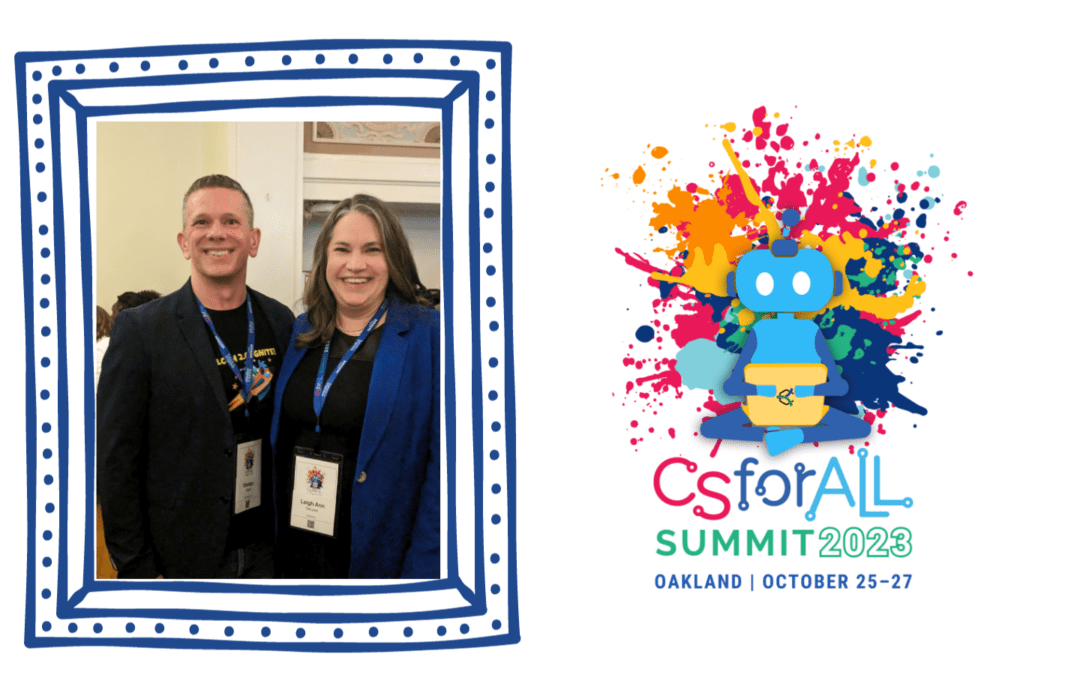At least 41 states have adopted computer science standards, elevating the subject’s importance alongside math, reading, history and science. The definition of computer science represented in these standards encompasses a wide array of digital skills and knowledge including cybersecurity, digital citizenship, analyzing data, computational thinking, debugging and problem solving – foundational skills that make students good digital communicators, collaborators and creators. Schools and districts are rising to the challenge by working to incorporate these topics and skills into their curriculum, all the way down to their youngest learners in early elementary.
Foundations first
To close the digital divide and deliver on the promise of equipping all students with the computer science skills they need to succeed in the future, we must begin by teaching all students foundational digital skills upon which they can build more advanced understanding. We know that long before we ask students to write a five-paragraph essay, we must first teach them spelling and grammar. And if we want students to learn calculus in high school, we know to teach them addition and multiplication in elementary school. Similarly, if we want students to code and learn advanced computer science skills in high school – or sooner – then we have to give them the foundational digital skills at a much earlier age.
Learning.com, which acquired Codesters in December 2022, has been providing essential digital literacy skills to K-12 students for over 20 years. Today, more than 1.8 million students each year learn critical digital skills on Learning.com – and that is significant. It means Learning.com has quietly been a leader in the computer science education movement for more than two decades, equipping millions of students with skills essential for success in the digital future and laying a solid foundation for them to build up to advanced computer science.
Our commitments
Last month, I was proud to represent Learning.com at the CSforAll Summit, and to announce our two formal commitments to the CSforAll movement:
To collaborate with our 1,500 school districts across the U.S. to deliver a robust computer science curriculum to ALL their students using our comprehensive computer science solution combining EasyTech and EasyCode to cover ALL computer science standards.
and
To combine our award winning EasyTech and EasyCode solutions into a comprehensive computer science curriculum covering all computer science standards and to developing robust assessments to ensure that students who complete our curriculum are achieving mastery of those standards so that our 1,500 school districts can be confident that their students are being prepared for success in a digital future.
With these two commitments, we are announcing our dedication to providing comprehensive computer science education to millions of students across the U.S., and to further enhance our offerings to make it easier for teachers to integrate computer science into their core curriculum with projects where students can deepen their understanding while demonstrating mastery of computer science and core subject standards.
Breaking down silos
One of my biggest takeaways from the CSforAll Summit was the desire to see the many advocates of computer science education to work more closely together. I had the pleasure of joining a panel that included school administrators and community organizations discussing “CS Ground Movement: Modeling Best Practices.” And I had countless illuminating conversations with education researchers and nonprofits at the conference. These groups – educators, researchers, curriculum providers, community organizations and nonprofits – have traditionally worked in silos despite striving toward the same goal of computer science for all students. I believe that the most effective way we can deliver on the promise of CSforAll is for these groups to collaborate closely on our mutual efforts while recognizing what we each do best and the unique value we each bring to the equation.
After the CSforAll Summit, I am more inspired than ever to build those bridges on behalf of Learning.com, and deliver on our commitments to ensure all students are empowered and equipped with the computer science skills essential to future success.

Gordon Smith
Vice President of Product Strategy
Gordon Smith has been an education entrepreneur for more than 20 years. Prior to joining Learning.com as vice president of product strategy in 2023, he co-founded Codesters, a web-based coding curriculum that teaches the Python coding language to 8th through 12th graders.

